The Speidel Braumeister was the first of the all-in-one systems that I had ever heard of. Needless to say, I was in love. Even in commercial craft breweries, I had never seen an automatic step-mash control! Of course, I know better now, but at the time my mind was completely blown.
I had to see one in action. I found a Sydney brewpub using a 200 liter Braumeister brewing system (Flat Rock Brew Cafe) where the owner/brewer let me into the subterranean brewery to have a play. It is a marvelous piece of brewhouse!
A 200 liter brewhouse may be a bit much for the home brewer, but the principles are nearly identical on all sizes of Braumeister – so let’s examine the features typical to the series.
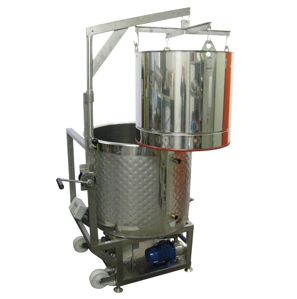
The Braumeister 200 liter
Features
This all-in-one unit, the Speidel ‘Braumeister Electric All Grain Brewing System’ works like a super advanced Brew In A Bag (BIAB) system, with greater efficiency and automatic step mashing. The outer basket is similar to an oversized hot water urn, with programmable temperature controls to raise the temperature at set intervals. Within is an extremely well-designed grain basket system serviced by pumps that can flow through the grain in two directions (one direction for mashing, the other for recirculation and clarification).
Check out the Braumeister video here
The Braumeister currently comes in five sizes – 10 liters, 20 liters, 50 liters, 200 liters, and 500 liters. These sizes are based on final volume of beer, post fermentation. Aside from the size of the gear, the main difference is that the 200 and 500 liter models have built-in cranes to help lift the grain basket from the wort. They also have a double-jacket insulation/cooling system.
They are available from a variety of suppliers – I choose Adventures In Homebrewing, although Amazon is also a great option – click here for Amazon in your country.
Read on for specific details of this great machine, or read a comparison with other similar systems here.
Review
The Speidel Braumeister claims to be a fully automatic brewing system – this is very nearly true. The process of mashing malt is taken care of automatically, but you will need to return to lauter the wort by lifting the inner grain basket into place and draining the wort from the grains. You will also need to add hops manually during the boil.
You have to hand it to the German engineering of Speidel – the robust stainless steel design of the Braumeister is first class: everything is internally contained and sturdy. It’s probably the hardest of the all-in-one systems to damage. This comes with a price, though: it’s also one of the hardest to clean.
While still my favorite all-in-one system, there are a couple of fundamental issues. The major drawback is the lautering/sparging system: on the smaller 20 and 50 liter systems, you have to lift the grain basket into place, which works if you have a strong back, but is a nightmare otherwise. You then have to heat water separately to rinse through the grain bed if you want to sparge. The other issue is high gravity beers: due to the precision of the Braumeister, each model has a strict grain limit.
Related article: How to Filter Beer
Despite these, the Braumeister is an excellent all-in-one brewing system. In terms of automation, it sits somewhere between the Grainfather and the Picobrew Zymatic. It stands out for having a reversible mash flow, greater brewer’s input than the Picobrew, and a less complicated process than the Grainfather. It is equally efficient for space as both the Picobrew and the Grainfather.
Pros
- Automatic mash and boil schedule
- Allows for brewer’s personal touch
- Sturdy, robust design
- Mash is stirred by reversible flow
- Very space efficient
- Comes in a variety of sizes for home or commercial use
Cons
- The price – it’s expensive to get the best of the best
- Manual lifting required
- No integrated sparge system
- Manual boil and hopping process (I actually enjoy this, so it’s not really a con for me personally)
- Cleaning
Verdict
The fact that the Speidel Braumeister is available in a range of sizes is a big draw card for me. Overall, this is my favorite all-in-one brewing system, although the manual aspects mean that I wouldn’t be using it as a pilot system for a commercial brewery – I’d see the Zymatic.
Is it worth the price tag? Well, it is not as ‘fully automatic’ as Speidel claim, but yes. The fact is, it is much easier to use than a Grainfather and your beer is more personal than with a Picobrew.
The Braumeister does not come with an included cooling system (except for the 200 and 500 liter models), but some suppliers do have kits with these included for very little extra. Highly worthwhile.
.
Not Sure if it’s Right For You?
If you are still unsure, I have compared the top three automated brewing systems here.
CHEERS!
At the time of writing, most suppliers are unable to source the smaller 10, 20 or 50 liter models as Speidel has yet to launch the improved Braumester v2. Please check in with Homebrewing.org or these international suppliers for release updates!
I hope you find my review useful – please scroll down to leave a comment, questions, or experiences below.
Related: Top 6 Craft Beer Industry Trends To Watch Out For In 2023




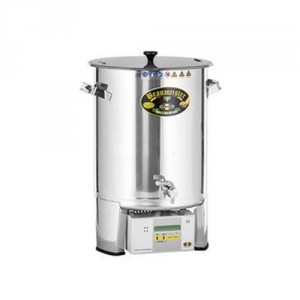
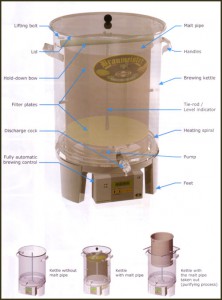
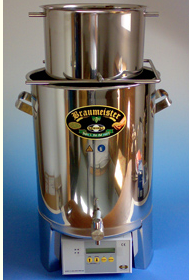
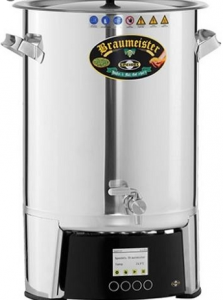
I liked your product review for this brewing system. I am glad that you didn’t just try to sell on all the great things about it, but that you also included the cons. I get a little suspicious if there isn’t some information about the downsides because it seems like a “too good to be true” kind of thing. I think the video helped provide some information about how it works as well.
Since I’m not yet familiar with brewing beer, I think it might be helpful for you to maybe explain some terms. One term that I didn’t understand at all is “sparge”. For someone who is interested in starting to brew their own beer, some quick info like that would be helpful.
Hi Bret,
Thanks for reading – good point. Here is a glossary of tricky terms contained in this article:
Mash: The mixture of malted grain and hot water
Mashing: The process of heating water and malted grain at specific temperatures to get a specific chemical result (with the Braumeister, this is very easy.)
Lautering: The process of draining the liquid from the grains, after mashing.
Sparging: The process of rinsing the remaining sugary liquid from the grain, after lautering.
Sparge literally means “to rinse.” I believe it is an old Scottish word.
You might also need to know Wort, which is the sugary, malty liquid you produce while brewing. When wort is fermented, it becomes beer.
Thanks for a relevant question!
Love the review, even though usually I’m a wine drinker. I make my own wine at home and loved it, especially the smell of the yeast.
Regards, Sylvie
Hi Sylvie,
Thanks for your comment. I don’t have too much knowledge of equipment for brewing wine must, I imagine it’s quite different without the need to convert malt starches into soluble carbohydrates!
Cheers,
Jesse
Hi thanks for the rewiev.
I have been brewing beers for more than four years now.
I like to make strong beers at 8-11%. With a 50 liter version are there any problems getting high enough gravity, and what will the mash efficiency be at ?
Are there any issues with stuck mash when using 5% flaked oats or more ?
Cheers
Hi Andre (Sorry, I can’t figure out how to get the accent on top of the “e”)
You won’t get a stuck mash due to the recirculation system, which is a nifty pump that works as an underlet below the false bottom. There could MAYBE be drainage issues during the lautering stage, but generally 5% flaked oats won’t be a problem.
As to high gravity brews, I have never made a beer above 7.5% on a Braumeister, but Speidel recommends using a technique similar to doble-doble (you mash half the grain, boil down the liquid volume, then add the second half of the grain in the original wort with added hot liquor.)
I hope this helps! If you have any comments or need more advice, just email me on jesse@winningbeers.com, or comment below.
Cheers, and happy brewing!
Hi Andre, I am a keen brewer and now thinking of getting a all in one system to save space in my home. I think the braumeister meet my requirements. Can you help me choose which size of unit to buy? I wish to continue using my kingkeg 5 gallon barrels and would like to be able to make a patch which would fill one at a time. What are you thoughts?
I strongly believe this will reduce the time it will take to make beer.
Thanks
Joseph
Hi Joseph,
Thank you very much for your comment. I have used the 20 litre and 200 litre models, and last week I finally got to use a 50 litre model. There are two things to consider when you make your choice: The first is the volume – you can’t make a 20 litre batch on the 50 litre model. The other issue is power – make sure your wiring can handle the draw – the 50 litre model requires up to 16 amps. Check your fuse box.
If you want to see what I mean, check out this video of my disastrous first attempt on the Braumeister 50L: Using the Speidel Braumeister 50L
If you are thinking of buying a 20 litre model, get it from Homebrewing.org (click here) or for a 50 litre model go to Amazon (click here)
Cheers!
With more products on the market now, and with having the Plus version available with a cooling jacket, its even more difficult to answer “is it worth it.”
You say that its expensive to get the best of the best; but, I cant tell what makes it the “best.”
BB
Hi Bill,
What’s “best” is different for everyone, depending on individual needs. What do you feel is the best, and why?